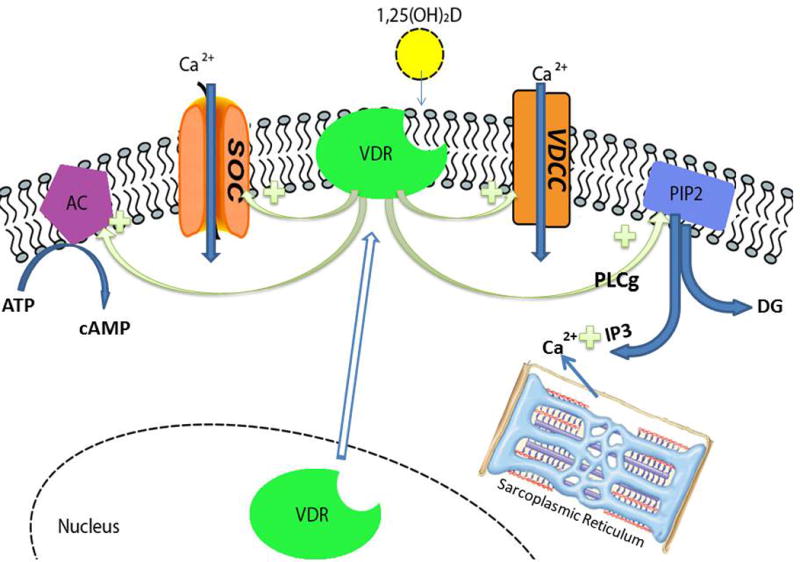Figure 5.

The rapid actions of 1,25(OH)2D–VDR on calcium flux within the muscle cell. VDR is translocated from the nucleus to the membrane where it is activated by 1,25(OH)2D to stimulate calcium influx through store operated (SOC) and voltage dependent (VDCC) calcium channels. 1,25(OH)2D–VDR also activates phospholipase C γ (PLCγ) that in turn hydrolyzes phosphatidylinositol bisphosphate (PIP2) to inositol trisphosphate (IP3) and diacyl glycerol (DG). IP3 stimulates the release of calcium from the sarcoplasmic reticulum; DG activates protein kinase C. 1,25(OH)2D/VDR also activates adenyl cyclase (AC), producing cAMP, and activates the mitogen activated protein kinase (MAPK) pathway (not shown).
